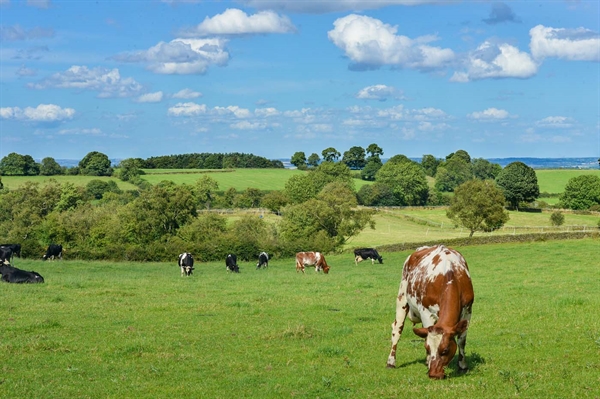 WASHINGTON—The U.S. Department of Agriculture’s annual land values report, released on Aug. 6, indicates that U.S. cropland is now valued at an average of $4,420 per acre, the highest on record and up almost 8% from $4,100 in 2020, which was the previous record high. The report also set the average value of an acre of Virginia cropland at $4,680 an acre.
WASHINGTON—The U.S. Department of Agriculture’s annual land values report, released on Aug. 6, indicates that U.S. cropland is now valued at an average of $4,420 per acre, the highest on record and up almost 8% from $4,100 in 2020, which was the previous record high. The report also set the average value of an acre of Virginia cropland at $4,680 an acre.
USDA also reported that farm real estate value, which measures the value of all land and buildings on farms, also increased to a record-high $3,380 per acre from $3,160 in 2020. Virginia’s real estate value also was higher than the national average at $4,700 per acre.
Tony Banks, senior assistant director of agriculture, development, and innovation for Virginia Farm Bureau Federation, noted the increase—and relative stability—of cropland values in Virginia generally is beneficial for farmers.
“Stable land values help farmers who own their land because it improves their equity positions and their ability to see returns on their investments,” Banks said. “That equity can then help farmers obtain loans for increased production or help serve as collateral for other future investments.”
The stability of land values also reduces the potential for large swings in the cash rental rates farmers pay, which was the case in 2021, Banks said.
The National Agricultural Statistics Service recently published data regarding cash rental rates for U.S. cropland, finding the average rate was $141 per acre, up from $139 in 2020. In Virginia, cash rental rates for cropland decreased slightly in 2021, dropping to $61 per acre from $62 in 2020.
Grain farmer Craig Giese, who farms over 500 acres of rented land in Lancaster County, noted the continued increase in land value doesn’t necessarily mean Virginia farmers will pay higher rent prices.
“Land values obviously will have some correlation to rent prices, but rent prices mostly are related to commodity prices,” Giese shared. “It’s always a delicate balance of where commodity prices are and what your rent is, but in years like this, with farmers getting good prices, we can afford to pay a little more.”


